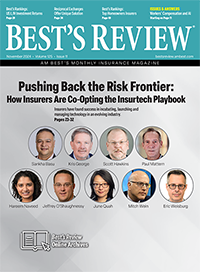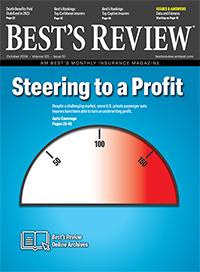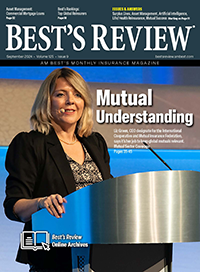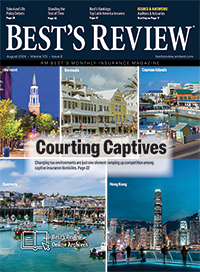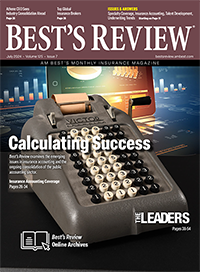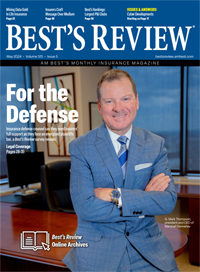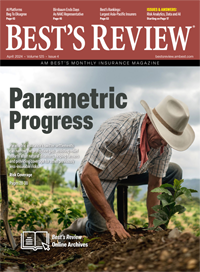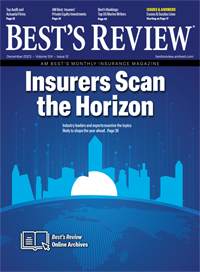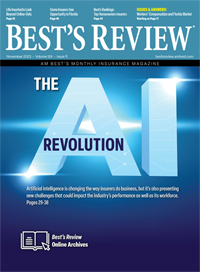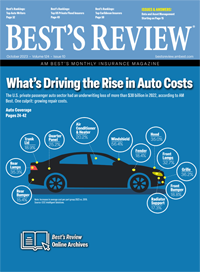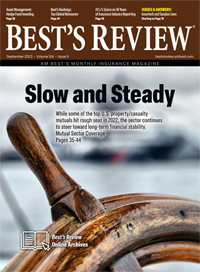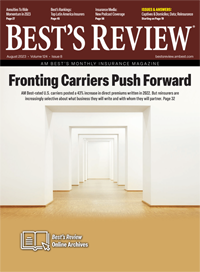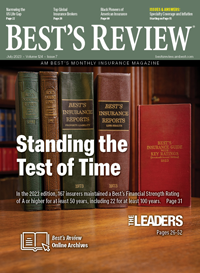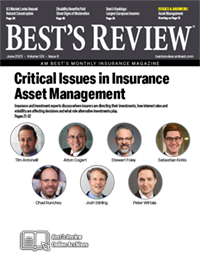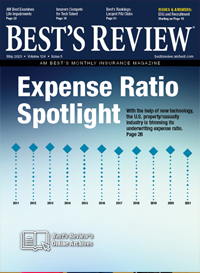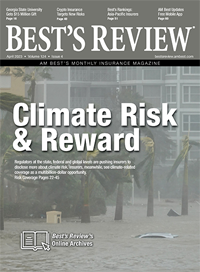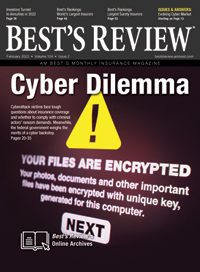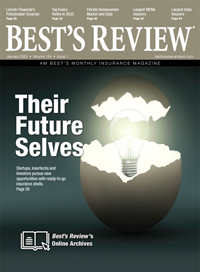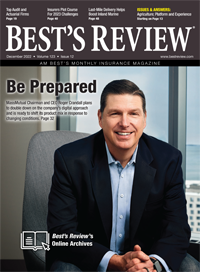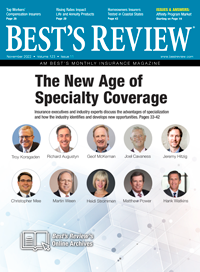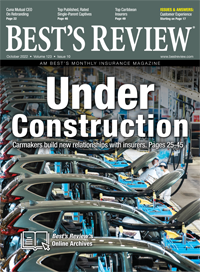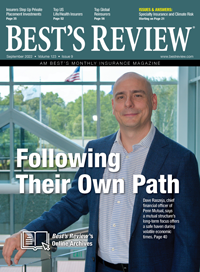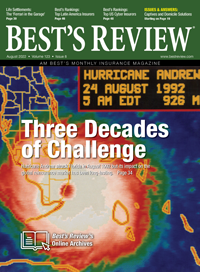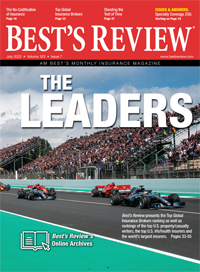The Arrogance Of the Algorithm
Ralph Nader once accused auto manufacturers of making cars that were "unsafe at any speed." Now he's turning his attention to autonomous vehicles and urging insurers to step up to the plate.
- TBA - Writer
- October 2016
-





Consumer advocate Ralph Nader likes to cite "the arrogance of the algorithm" when decrying the rush to put fully autonomous vehicles on the road.
"Too many complex variables cannot be anticipated with driverless cars, especially when the vast majority of cars on the road are traditional driver-directed cars, who behave in a whole variety of ways that aren't predictable," Nader said. "Not to mention bicycles and puddles and potholes and shiny sides of trucks. That's why I call it the arrogance of the algorithm."
Long a passionate and--pardon the pun--driven citizen activist whose 1965 book, Unsafe at Any Speed, led to important safety changes in the automobile industry, Nader questions the capabilities of a self-driving vehicle's operating system.
"This has all kinds of interfaces with chickens, goats, ruts in roads, a branch that fell on a highway, 15 billion decisions by motorists that have to be anticipated," he said. "Street rogues changing signs and playing."
The 82-year-old former presidential candidate is still going strong, hosting a radio show and writing blogs and a weekly news column.
Nader told Best's Review he's also concerned with hacking that could either circumvent safety features or invade privacy. "People will know who went to what home and at what time," he said.
"It's too much too fast, untested and going into areas where the variables escape the algorithm," he said. "It's basically parking lot data and property. If you want to really test it, go into Manhattan."
And get insurers--especially those who have long been leaders in quality control and safety improvements--more involved.
"The insurance industry has a huge role here to play," he said. "One of the roles is to develop an equivalent for Underwriters Labs, where they have their own testing capabilities. lf they believe it's a reality, that it's not just a lot of PR and techno-twits.
"Second, they need to have a declaration of who is responsible for what. How much is the responsibility of the manufacturers, the dealers, the suppliers, the drivers, the repair shops? They've got to figure out all this stuff. And to what extent are they going to put fine print in their insurance policies exculpating themselves from having to pay like they do in homeowners policies?" he asked.
"I would like to see an expression from insurance companies on what their emerging loss prevention strategies are here, because as drivers buy more semi-autonomous equipment, to what extent will the insurance companies have exclusions or to what extent are they going to surcharge, or discount premiums the way they do for good driving," Nader said. "Are they going to discount a good driving autonomous vehicle who's not a human being, and how are they going to do that if they don't test it at, for example, the [Insurance Institute for Highway Safety] testing grounds."
Nader also criticizes the U.S. Department of Transportation and National Highway Traffic Safety Administration for the lack of regulation of this emerging technology.
In remarks at the Automated Vehicles Symposium 2016, however, NHTSA Administrator Mark Rosekind said the feds are on the case.
"I strongly believe that DOT and NHTSA are well-positioned to very soon unveil strong highly automated vehicle guidance that will lay the path to the safe deployment of lifesaving technologies," Rosekind said at the July event. "That guidance … is being reviewed, tweaked and perfected as we speak. It's an important document, and so it's important that we get it right.
"The approach that is being taken is designed to be nimble and flexible, able to keep pace with technological innovation. But it will also lay out much more specific guidance for the development of new technology than has existed in the past, in keeping with the department's forward-thinking, proactive stance on all of this opportunity," he said. "It's the first step, but a step that will lay the road map for the next generation of vehicle technology."
The NHTSA estimates 613,501 lives were saved due to auto safety technologies over the past 50 years. "How many more lives might be saved in the future with highly automated vehicles?" Rosekind asked. "The Department of Transportation and NHTSA are committed to finding out."
Nader, while supporting semi-autonomous features--for example, semi-automatic brakes, electronic warnings of objects in the road, lane departure warnings, adaptive cruise control--questions the likelihood of fully automated vehicles ever becoming commonplace.
"If all vehicles on the road are autonomous, that's of course a much more predictable situation, but when are you going to do that? There is very substantial opposition in public opinion polls," he said. "Drivers like to control their cars. … And suddenly you've got this algorithm taking you here and there, and you're looking and hey, there comes some wildcat obstacle. So they haven't cranked in the psychological aspects of the would-be drivers."
Nader said he would like to see more testing in real-world situations, with standards organizations setting minimum levels of compliance so consumers can make informed decisions. And he wouldn't mind steering the conversation away from autonomous cars right now.
"It's a huge distraction from modern mass transit, from upgrading and expanding the moving of people on the ground very safely in predominantly automatic systems," he said. "Ninety-nine percent of the people on the train are not driving the train."
As to the matter of trains stopping at stations and not individual doors, he said: "We're talking about a balance here. You're talking about needs on the ground now that can be met with existing technology of public transit to some pie in the sky science fiction deception.
"You will not see a fully driverless vehicle transportation takeover in 30 years--even Google has pushed it up to 2030, and when you push it up to 2030, that's basically never-never land," he said.
Autonomous vehicles are poised to hurt another worker-populated industry, one that's already getting slammed in the largely unregulated ride-hailing arena, he said.
"Uber's putting a lot of cabs out of business," Nader said. "There's no equal regulation. … Every time I get into a cab in Washington, D.C., my first words are, 'Down with Uber.' My second words are 'Straighten out your cab service, which led to Uber.'
"I don't believe in companies that displace full-time jobs with part-time jobs, and then screw the part-time workers by throwing in their face that you really want autonomous vehicles and you don't need them either," Nader said.
By Regina Whitmer
(Regina Whitmer is a news editor. She can be reached at regina.whitmer@ambest.com.)


